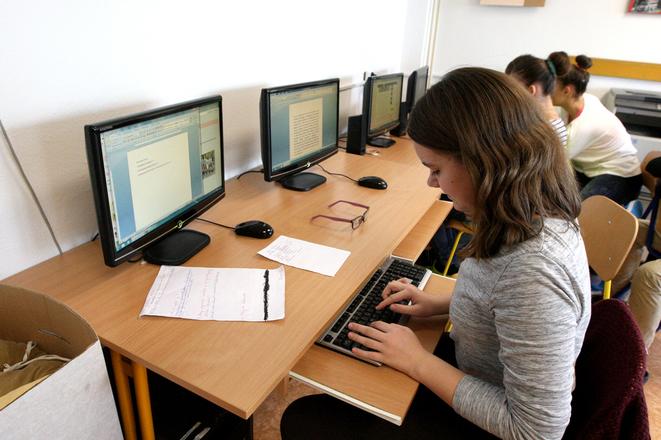The interest of girls at primary schools to study mathematics, physics, chemistry, natural or information sciences declines steeply after they turn 12.
This stems from a European survey carried out by the company Microsoft in 11 countries among 11,500 schoolgirls aged 11-18. Its aim was to find out why fewer girls than boys decide to study science and technology when they are older, the SITA newswire reported.
Slovak girls become interested in the so-called STEM subjects only as 12-year-olds, which is one year later than is the European average. The more alarming fact, however, is that in the age when they decide on which secondary school to study at (13-16 years) their interest falls well below the European average, said Lenka Čábelová, communication manager of Microsoft in the Czech Republic and Slovakia.
Compared with the rest of Europe, the earliest age at which girls become interested in science and technologies is in Russia: age 10. In Poland, they become interested as 12-year-olds, but their interest keeps increasing significantly when they turn 16 and never drops below the European average, SITA reported.
The government, teachers and parents in Slovakia, and also in Europe, have four-five years on average to divert the falling interest of children in STEM subjects during the ages of 12-16, according to Microsoft. Though their interest starts increasing again when they turn 16, it never returns to the same level as when they were 12.
“Girls don’t see a sufficiently strong connection between these subjects and their everyday life, they lack the support of their parents and teachers, and also enough role models to find a job in this sphere in their future life,” Čábelová said, as quoted by SITA.
One of the reasons why they lose interest in STEM subjects may also be the transition from the first to the second part of primary school education, the change in environment and teachers, and their teen years.
The fact is, however, that girls often record better results in STEM subjects than boys, said Beáta Brestenská of the Comenius University’s Faculty of Natural Sciences.
“Despite this, young women resign from pursuing a career in science and technologies,” Brestenská said, as quoted by SITA, adding that female graduates from technical and natural science specialisations are missing not only in companies, but also in the non-profit sector and state institutions.
The statistics of the Organisation for Economic Cooperation and Development (OECD) suggest that only one of five graduates of computer sciences in 35 European countries is a woman. According to Microsoft, this is unused potential and one of the main problems for the current as well as future labour market, as reported by SITA.



 Illustrative stock photo (source: SME)
Illustrative stock photo (source: SME)